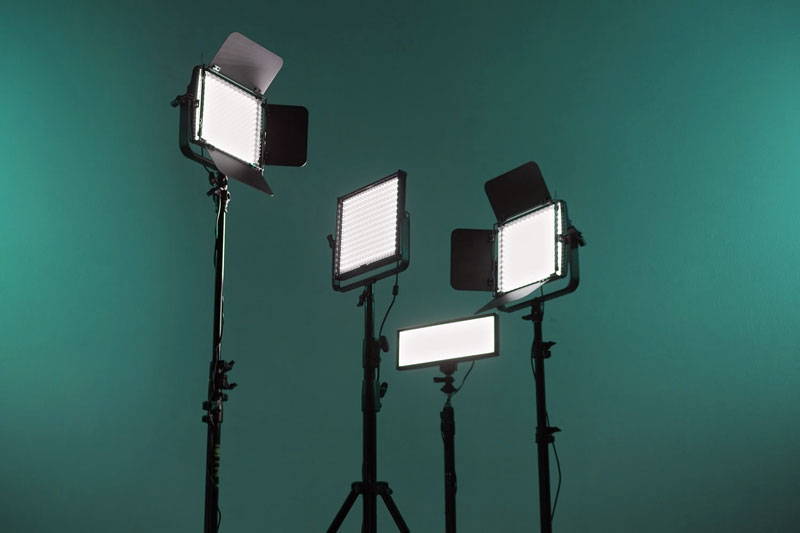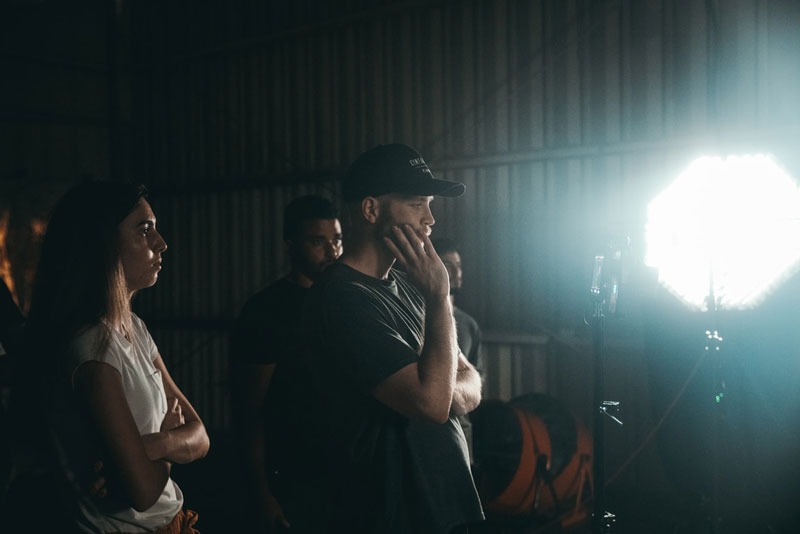17 Aug The Basic Principles Of Film Lighting
In a previous post I said that if sound is done well in a film the audience won’t notice it. It will silently generate an emotional response. So, if music and sound can subconsciously illicit responses in the audience what is the visual equivalent? That would be lighting.

Lighting is the most subtle element of mise-en-scéne (the elements of the film image that exist before the camera independently of post-production such as actors, costumes and props, make-up, sets and of course, lighting).
Though it may be the most subtle element of a production’s mise-en-scéne it is also the most vital. It is vital because motion pictures and videos are essentially captured light.
Cameras record images by focusing light through a lens onto a light sensitive surface (or into a digital encoder in modern times). Cinema itself had a naturally innovative progression starting from still photography with the advent of The Lumiére brothers’ Cinémataographe projector.
Lighting is crucial to the aesthetic look of your production and can be used to create depth, distinction and dimension. It can also be used to subtly support narrative and invoke emotional responses in your audience.
I’ve outlined the main elements of the most common lighting set-up used in the film industry and how they can be orchestrated to change the aesthetic production quality of your work. There is an infinite number of methods to light your scene, so we’ll keep it basic.

Three Point-Lighting
Three-point lighting is the most common set up for lighting productions. It often considered the Hollywood standard. Once you understand the principles of this lighting method you can alter its elemental compositions to achieve a wide array of effects.
Three-point lighting is the combination of three different light sources to create a certain distribution of light in a scene. Altering the ratios of each source manipulates the balance of lighting and shading to create different effects.
Those elements include:
- Key Lighting: The key light is the main source of light for the scene. It is often also the brightest or sharpest light.
- Fill Lighting: The fill light is used to compliment key lighting and fill in the shadows created by the key light. It will often be softer than the key light and can be used to balance the key light or help emphasise other spaces or elements of the scene.
- Backlighting: This is a light source that is placed behind the main subject of the scene. Its main purpose is to create a distinction between the subject/foreground and the background of the scene.

Composing Your Lighting Set Up
When Lighting your scene there are 4 main attributes of light that you can factor into your lighting configuration to change the look and feel of your production. Varying the degrees of these attributes can help you find the most appropriate aesthetic for your work.
Direction
Altering the direction of your light sources will alter the amount and the shapes of shading on your subject. It’s particularly useful for creating definition and depth in faces as well as highlighting certain features you wish to draw the audience’s attention to.
Colour
It’s easy to forget that light can come in a variety of colours. Using a colour gel or coloured filter on your light is an easy to change the mood of your scene and a really simple way to illicit an emotional response or introduce a change in setting or temporality.
Quantity
Like direction, the quantity of light will affect how the shading of a scene as well as how the camera will capture the image. Too little light and the scene will be dark and gloomy (not to be confused with contrast which can be used to great effect like in Film Noir). Too much light and your risk overexposure and your scene will be a wash out.
Quality
Light quality will impact the definitions created by shading in your scene creating either hard or soft shadows relative to the quality of the light. It can be used to great effect to create high contrast shadows.
Check out this video below from Parker Walbeck of FullTimeFilmmaker.com where he outlines the different lighting methods you can use but experimenting with the elements listed above.


